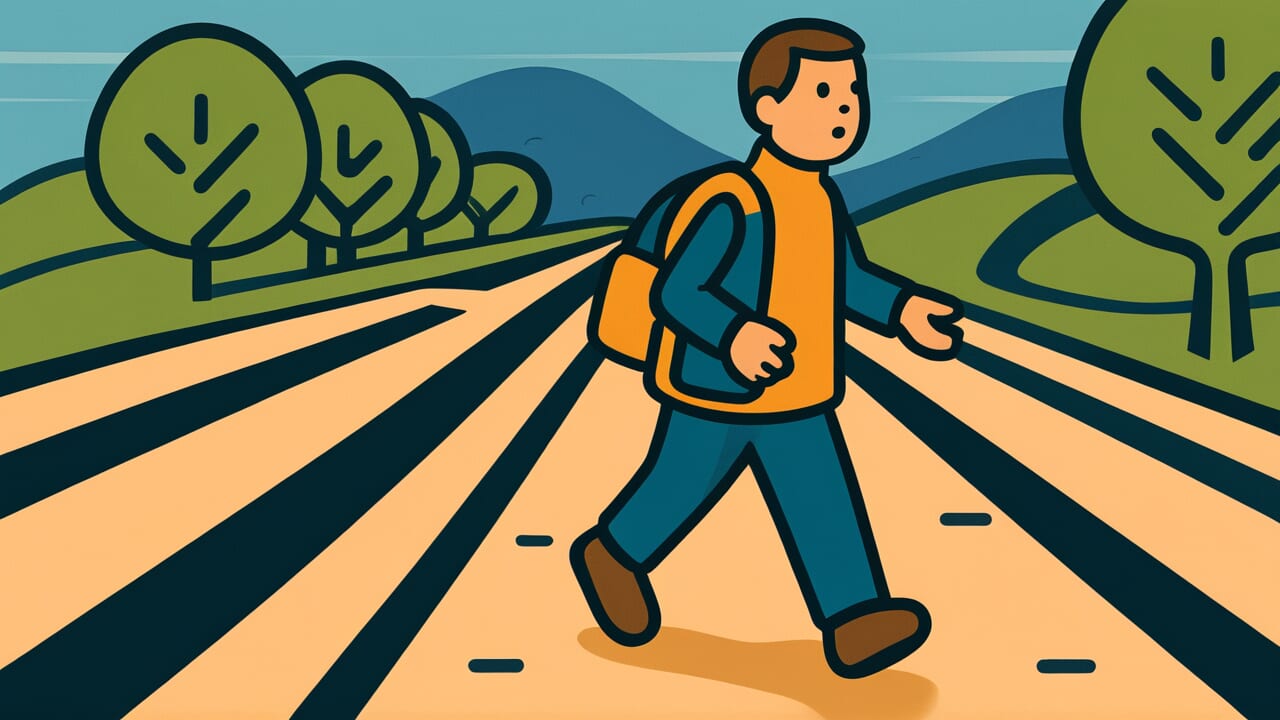How to Read “He who goes slowly goes safely”
He who goes slowly goes safely
[HEE hoo goze SLOH-lee goze SAYF-lee]
All words use standard pronunciation.
Meaning of “He who goes slowly goes safely”
Simply put, this proverb means that taking your time and being careful leads to better, safer outcomes than rushing.
The basic message is straightforward. When you move slowly and carefully, you avoid mistakes and dangers. Speed often creates problems that patience could have prevented. This wisdom suggests that steady, thoughtful progress beats hasty action.
We use this idea in many parts of daily life. Students who study gradually often do better than those who cram. Drivers who follow speed limits arrive safely more often than speeders. Workers who double-check their tasks make fewer costly errors. The saying reminds us that rushing usually backfires.
What’s interesting is how this challenges our modern world. We often feel pressure to move fast and get quick results. But this old wisdom points out a timeless truth. The tortoise-and-hare story teaches the same lesson. Sometimes the smartest choice is simply slowing down.
Origin and Etymology
The exact origin of this specific English phrase is unknown. However, similar sayings about the value of slow, careful progress appear in many languages and cultures. The concept has been expressed in various forms for centuries.
This type of wisdom became important during times when mistakes had serious consequences. In agricultural societies, rushing through planting or harvesting could ruin entire crops. In craftsmanship, hurried work often meant wasted materials and time. People learned that patience usually paid off better than speed.
The saying spread through oral tradition and written collections of proverbs. Different versions appeared in various languages, but the core message stayed the same. As transportation and communication improved, these wise sayings traveled between communities and countries. The English version we know today reflects this long tradition of valuing careful progress over hasty action.
Interesting Facts
The word “safely” comes from the Old French “sauf,” meaning “unharmed” or “secure.” This connects to the Latin “salvus,” which meant “whole” or “uninjured.” The idea of safety has always been about staying complete and undamaged.
This proverb uses parallel structure, repeating “goes” twice for emphasis. This repetition makes the saying easier to remember and gives it a rhythmic quality. Many traditional proverbs use this technique to stick in people’s minds.
The contrast between “slowly” and “safely” creates an interesting word relationship. While these words don’t rhyme, they both end in similar sounds, creating a subtle connection that helps the saying flow smoothly when spoken aloud.
Usage Examples
- Mother to teenage son: “I know you’re eager to get your license, but practice more in parking lots first – he who goes slowly goes safely.”
- Mentor to new employee: “Don’t try to master every system in your first week – he who goes slowly goes safely.”
Universal Wisdom
This proverb reveals a fundamental tension in human nature between our desire for immediate results and our need for security. We naturally want things quickly, but we also fear the consequences of failure. This creates an internal struggle that every person faces throughout their life.
The wisdom speaks to something deeper about how our brains work. When we rush, we often skip important steps or ignore warning signs. Our excitement about reaching a goal can blind us to obvious dangers along the way. Evolution gave us both urgency for survival and caution for protection. This proverb reminds us when caution should win.
What makes this truth universal is that it applies regardless of technology or time period. Whether someone is learning to hunt with a spear or learning to drive a car, the same principle holds. Hasty actions create problems that patient actions avoid. The specific tools change, but human nature and the laws of cause and effect remain constant. This is why the wisdom feels as relevant today as it did centuries ago.
When AI Hears This
Our brains work like cameras that need time to focus clearly. When we rush through decisions, we miss crucial details around us. Fast movement creates blind spots in our thinking. We literally cannot see dangers that slower speeds would reveal.
This explains why humans make the same speed mistakes repeatedly. We confuse our ability to move quickly with smart thinking. Our confidence grows as we go faster, but our actual awareness shrinks. This creates a dangerous gap we rarely notice until something goes wrong.
What fascinates me is how this limitation actually protects humans. Your brains evolved this way for good reasons over millions of years. Slow processing forces you to notice threats and opportunities others miss. The tortoise wins because careful attention beats raw speed in complex situations.
Lessons for Today
Living with this wisdom means recognizing when speed works against us. The challenge is that our culture often rewards quick action and fast results. Learning to slow down requires fighting against both external pressure and internal impatience.
In personal growth, this wisdom suggests focusing on steady progress rather than dramatic changes. Small, consistent improvements often create lasting results better than sudden, intense efforts. The key is identifying which situations truly require speed and which ones benefit from patience. Emergency situations need quick action, but most important life decisions benefit from careful thought.
In relationships and group settings, this principle helps create better outcomes for everyone involved. When teams rush through planning, they often miss important details that cause problems later. When people make quick judgments about others, they frequently get things wrong. Slowing down allows for better communication, deeper understanding, and stronger connections. The wisdom doesn’t mean being slow about everything, but rather choosing when careful progress serves everyone better than hasty action. This balance between speed and safety becomes a valuable life skill that improves with practice.



Comments